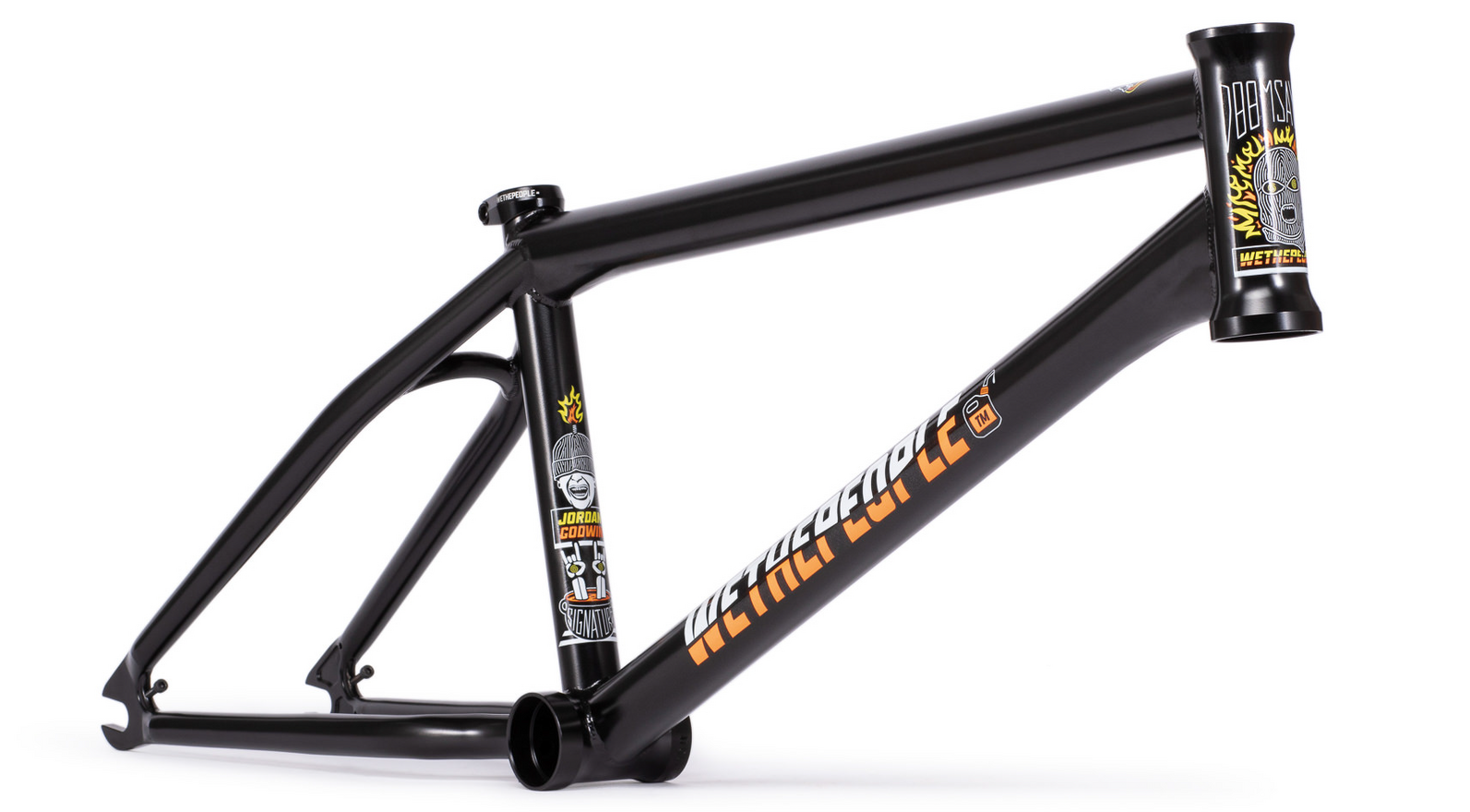If you're not sure what you're after, choosing a new BMX frame can be daunting, so to make sense of all the terms you'll find in our frame descriptions we've whipped up this quick and hopefully easy to understand guide on buying your next frame .
 BSD ALVX AF+ FRAME
BSD ALVX AF+ FRAME
TUBING - All aftermarket BMX frames (except some race frames) will be constructed from high quality, chromoly tubing in either Taiwan or the USA. Both countries produce great frames although you will find USA made to be slightly more expensive due to their higher cost of labour & materials.
TOPTUBE - Measured from the centre of the Headtube to the centre of the Seat tube. The longer the toptube, the more leg room you will have. Street riders often prefer slightly shorter toptubes (around 20.75") as it can be easier to throw the bike around while, trails riders usually prefer longer toptubes (21"+) for the extra room & stability in the air.
CHAINSTAY/REAREND - Measured from the centre of the Bottom Bracket to the centre of where the rear axle will sit in the Dropout.
Similar to the Top Tube, street riders often prefer shorter (12.5"+) Chainstay Lengths which make the bike easier to spin, whilst trails riders usually prefer something longer (13.75+) which makes the bike less likely to loop out & keeps it more stable in the air.
Note:- Slammed is the shortest possible length of the rearend, where the axle is as far into the dropout as it can go.
HEADTUBE ANGLE - The higher the number, the steeper the Headtube. A 75.5° Headtube makes the steering faster, ideal for front wheel tricks & technical riding but, less forgiving when riding transitions & big jumps where a more mellow Headtube of 74° or 74.5° would work better.
75° Headtubes are usually seen as a good middle ground for modern frames suitable for all round shredding.
 WE THE PEOPLE DOOMSAYER FRAME
WE THE PEOPLE DOOMSAYER FRAME
SEAT TUBE ANGLE - Usually between 69° & 71°. A frame with a 69° Seat Tube will feel smaller than a frame with the same toptube length which has a 71° Seat Tube as the Bottom Bracket on the 69° frame will be slightly closer to the Headtube. It's all triangles!
BB HEIGHT - Measure from the ground up to the centre of the Bottom Bracket. Usually between 11.5" & 11.8". A lower BB will feel more stable at speed, while a higher BB will be easier to pull up into manuals & gives more clearance for things like crooked grinds.
STANDOVER HEIGHT - Measure from centre of the Bottom Bracket to the centre of the Toptube. Lower Standover frames can make tricks like tailwhips easier to get back on but, can feel squirrely & unstable. Higher standover frames can feel more stable. Also, arguably, taller standover may be stronger as the front triangle of the frame is bigger than a low standover.
INTEGRATED HEADTUBE - 99.9% of modern BMX frames (again, except race frames) are built to work with sealed integrated headsets. These are a standard size with 45°/45° bearings.
BOTTOM BRACKET - After years of varying sizes, it seems that finally, all the major BMX Brands have settled on the Mid Size bearing as the standard. Spanish & US BB bearings are less & less prevalent in modern frames with Euro size bearings being almost exclusive to race frames in the BMX world.
HEADTUBE GUSSETS - Either internal (built into the tubing itself by making the Top &/or Downtube thicker at the end nearest the Headtube) or external (plates welded on the outside of the Toptube/Headtube &/or Downtube/Headtube junctions). These are a good thing & help keep the front end of the frame from failing.
BRAKEMOUNTS - If you don't intend to run brakes at all, brakeless is fine. If you want the option to run brakes (& possibly a detangler) sometimes then removable brakemounts are great (You may need to buy a suitable brakemount kit as they're not always included with the frame).
Welded on brakemounts work the best as they don't flex as much as the removable style but, they won't look as clean if you ride brakeless). Chainstay vs. Seatstay brakemounts is mostly personal taste. Seatstay mounts give more chain clearance but, Chainstay mounts arguably help give better braking performance.
DROPOUTS - 99.9% of BMX frames will have 14mm slots. On the odd occasion, trail frames will have 10mm slots to suit something like a Profile female cassette hub which uses 10mm bolts instead of the standard 14mm axle. Dropouts are either lasercut chromoly plates or invest cast. Both work well & some even have built in chain tensioners which run through the middle & stop your wheel from moving in the dropout.
That's a lot to take in right? We didn't even get into all the other super scientifical madness like offset thickness headtubes & invest cast bridges but, we've hopefully covered the basics to help you in the right direction.
If you do need more information, just get in contact & we'll do what we can to help!
Check out the full list of BMX frames that we stock here.